
The aim of any soil cultivation is to create optimum growth conditions for the plants. The type and timing of a measure have an influence on the physical and chemical conditions in the soil. The reconsolidation of the soil after previous loosening is of particular importance.
The objective measure of reconsolidation is the pore volume. It indicates the proportion of voids in the total volume of a soil. The pores are filled with water or air. The average pore volume of sandy and silty soils is around 40 percent and of clay soils around 50 percent. Without soil loosening, the value is often below this target range; after soil loosening, it is usually above.
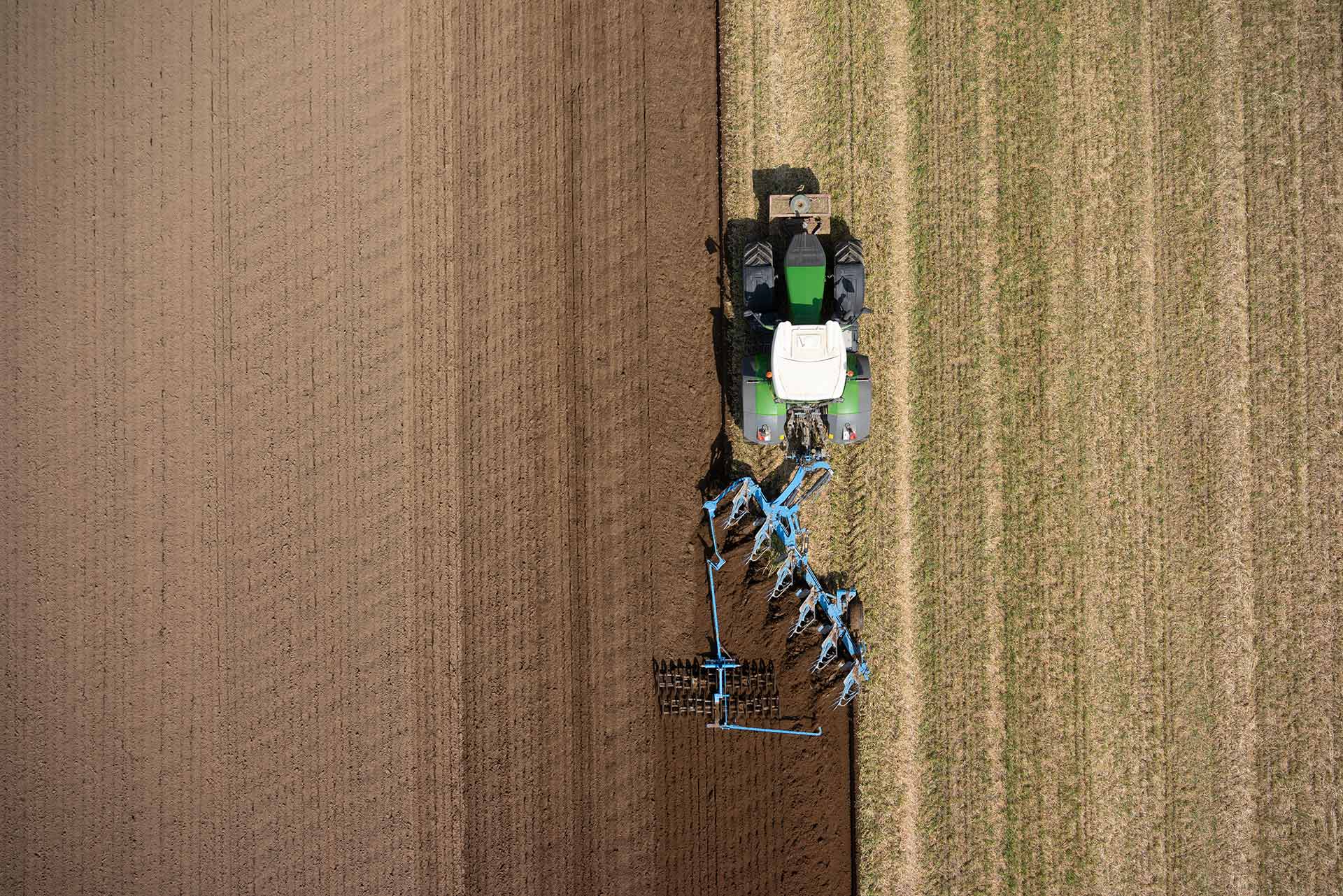
The soil must be reconsolidated especially when,
- it has been deeply loosened beforehand
- there is little time for natural settlement before sowing,
- there is a risk of the seed horizon drying out.
Dose pressure
After loosening, a dosed reconsolidation is necessary. This reduces the proportion of large air-filled voids and coarse clods. The reconsolidated horizon dries out less. At the same time, soil capillaries are formed through which water can pass from the subsoil into the seed horizon. The seed, covered with some loose soil, lies on this horizon, moist enough to germinate and grow safely. An optimally reconsolidated soil also has enough pores for gas transport. This is because the plant root needs oxygen and releases carbon dioxide. If there is a ‘log-jam‘ due to heavy compaction, growth will stagnate.
The required intensity of reconsolidation depends not only on the loosening, but also on the soil type:
- Light and medium soils do not need as much pressure as heavy soils.
- Caution is advised with wet soils, even if the compacting roller leaves an apparently decent result. Not everything that is technically possible is also useful from an agronomic point of view. In this case, there may be a reduction in pore volume, which has similar effects to harmful compaction. The water, air and nutrient balance of the soil and its rootability are permanently disturbed. This leads to noticeable yield losses.
Rollers are the means of choice
Since time immemorial, agriculture has used rollers in a wide variety of forms for reconsolidation. The intensity of the work depends, among other things, on the weight and diameter as well as the shape of their elements.
- Smooth rollers distribute their weight over a large area and therefore exert a uniformly low pressure with little depth effect. Rollers with high rings, on the other hand, provide reconsolidation in strips and at depth.
- ‘Cambridge‘ type rollers, which were developed in England in the 19th century, were, and still are, widely used. They have alternating smooth and serrated rings lined up on their axles. The serrated rings have a large bearing clearance. This prevents the roller from clogging with soil.
LEMKEN offers the right equipment for every reconsolidation requirement.
After the plough
Immediately after ploughing, LEMKEN packers ensure crumb-deep reconsolidation and crushing of the clods at the most favourable moment and in the optimum moisture state. This promotes the formation of fermentation and prevents dehydration.
- The integrated FixPack and Flexpack packers are firmly connected to the plough. This eliminates the need for separate transport journeys for the packer.
- The Variopack base packers are available as interchangeable base packers or as front packers. They are optionally available in single or double row, with 700 mm or 900 mm ring diameter, and with 30 or 45 degree ring profile.

After stubble cultivation and seedbed preparation
In stubble cultivation and seedbed preparation, the trailed rollers of the implement perform important tasks. These are designed to optimally reconsolidate, crumble, and level the soil, in a wide range of conditions. The purpose of reconsolidation in stubble cultivation, is to promote the emergence of failed grains or weed seeds.
Every farmer has different requirements for the roller types, depending on his soil conditions and farming practices. That is why LEMKEN offers a wide range of rollers that can be combined with cultivators, short disc harrows, power harrows, and seedbed combinations. There is a solution for every purpose. Nevertheless, if you are looking for a universal following roller for as many uses of an implement as possible, it is important to find the best possible compromise
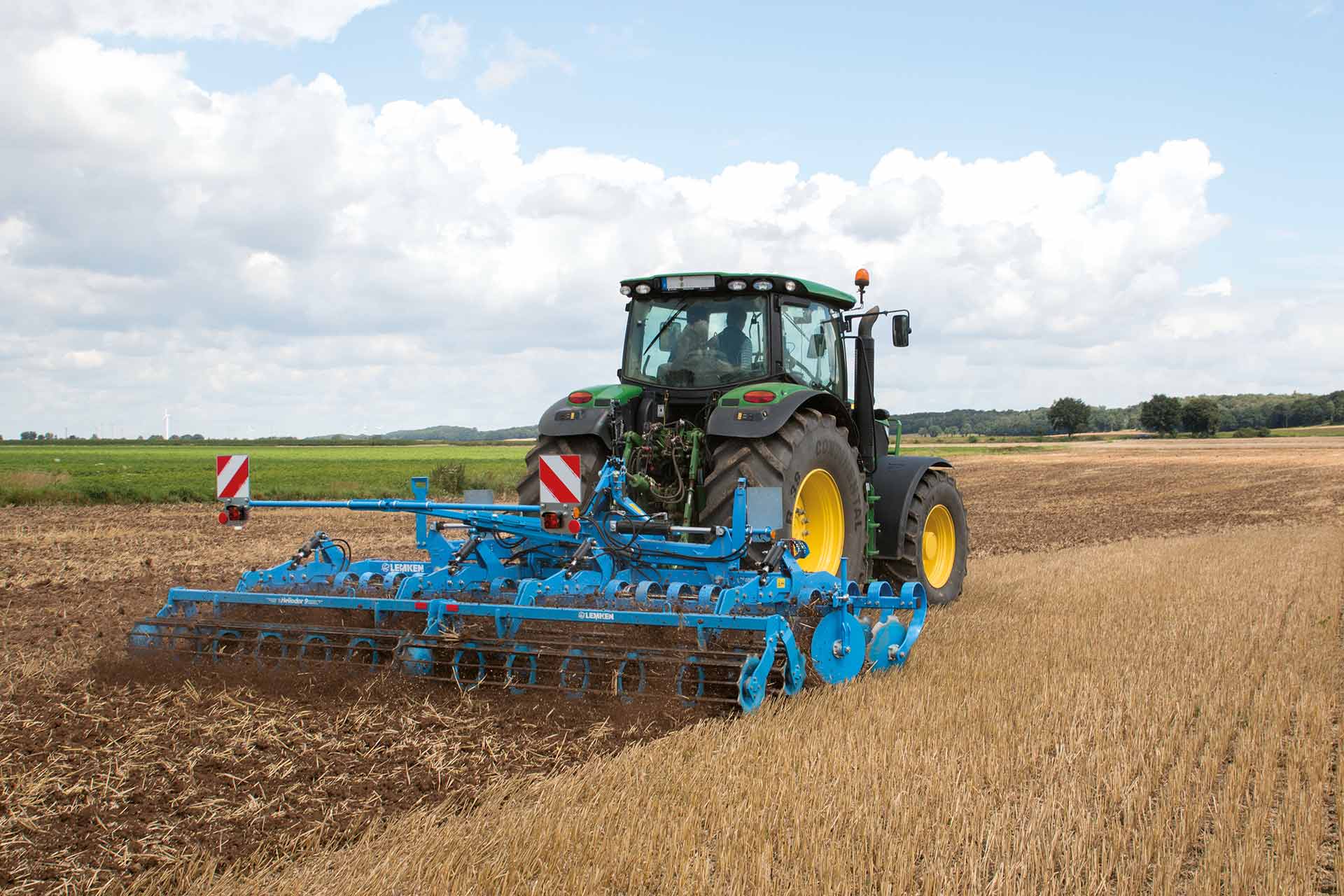
- After stubble cultivators, our customers often choose double rollers in tubular bar or combined tubular bar and flat bar design, on light and medium soils. These crumble the soil very well and provide good levelling and reconsolidation, with precise depth control.
- On heavier soils, the knife roller is the favourite. It cuts and crushes coarse clods very well.
- If the main task is to reconsolidate the topsoil and subsoil after deep loosening, the packer profile roller is the first choice. The front roller with packer profile works deep into the soil, the rear roller with W-profile ensures a good seedbed. Because of its high weight, it makes sense especially with semi-mounted implements.

When combining seedbed preparation with sowing
The trapeze packer roller is the bestseller when it comes to combined seedbed preparation and sowing, such as with the classic combination of power harrow and seed drill. The trapezoidal packer roller ensures intensive reconsolidation in strips. The seed is then placed exactly in these reconsolidated strips by the sowing discs.
LEMKEN also uses trapeze packer roller elements in the Azurit precision air seeder. They seal the deposited subsoil fertiliser and at the same time ensure reconsolidation of the seed horizon. This ensures capillary water rise and the plants emerge quickly and evenly
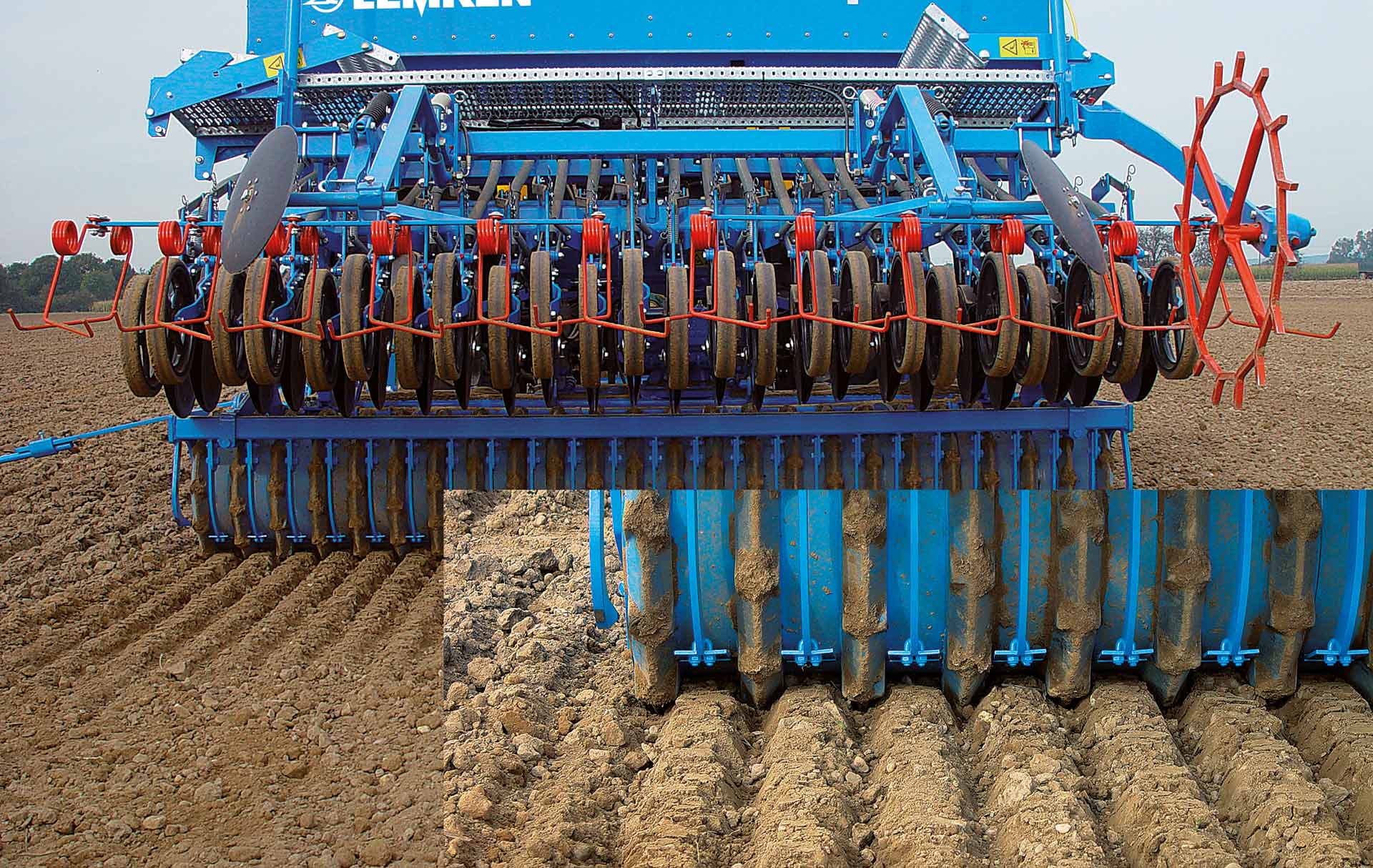
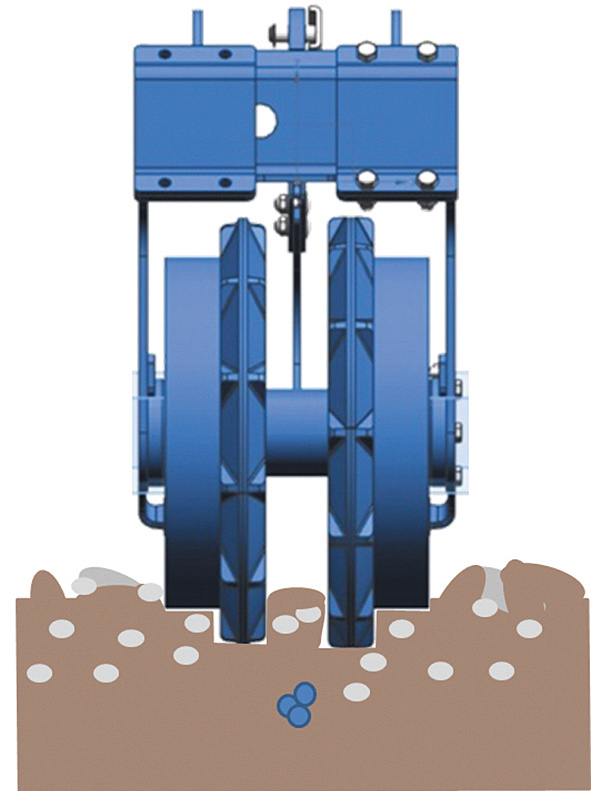
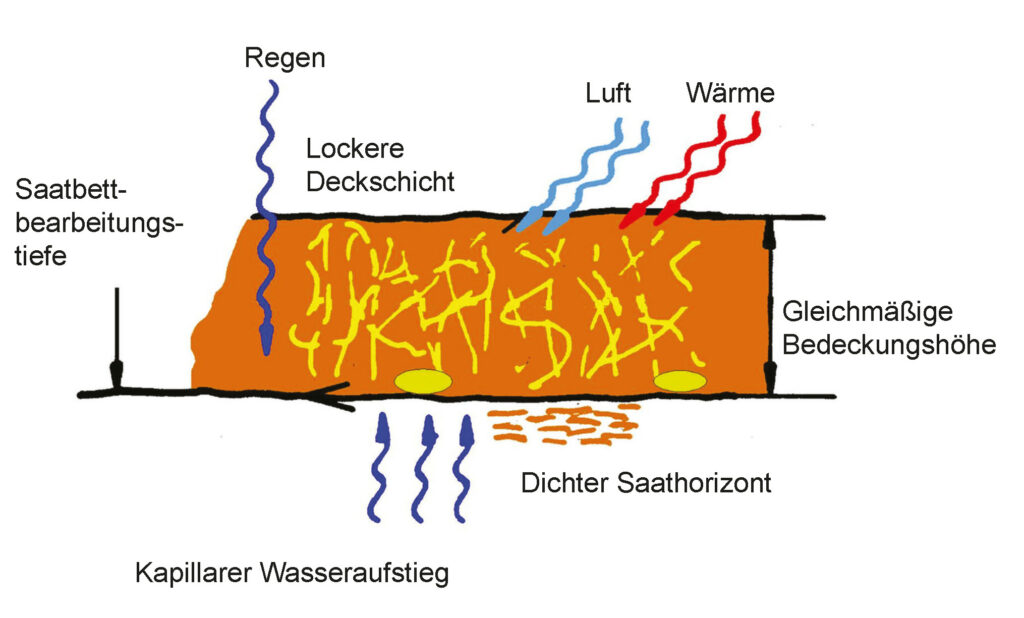
The soil type has a great influence on the size of the soil pores. The smaller the grain size, the finer the majority of the pores. Finer pores form between clay platelets than between coarse sand grains. Silt soils occupy a middle position. They have a high proportion of central pores that contain plant-available water, and the nutrients dissolved in it as free ions, can be taken up by the plant root. Water is also found in the fine pores of clay soils. However, it is bound so tightly that part of it is not available to plants. The amount of water available to plants is 115 litres per square metre on loamy sand, 220 litres per square metre on loamy silt, and 140 litres per square metre on loamy clay.
The LEMKEN trapezoidal packer roller is the bestseller for medium and heavy soils. Characteristic of the roller is the strip-wise reconsolidation of the soil by the trapezoidal rings, which work exactly at the row distance of the following drill rows. The soils retain a rough surface with plenty of fine soil, and thus have less tendency to ‘cap‘. A particularly uniform placement depth and optimum soil contact for the seed are achieved.
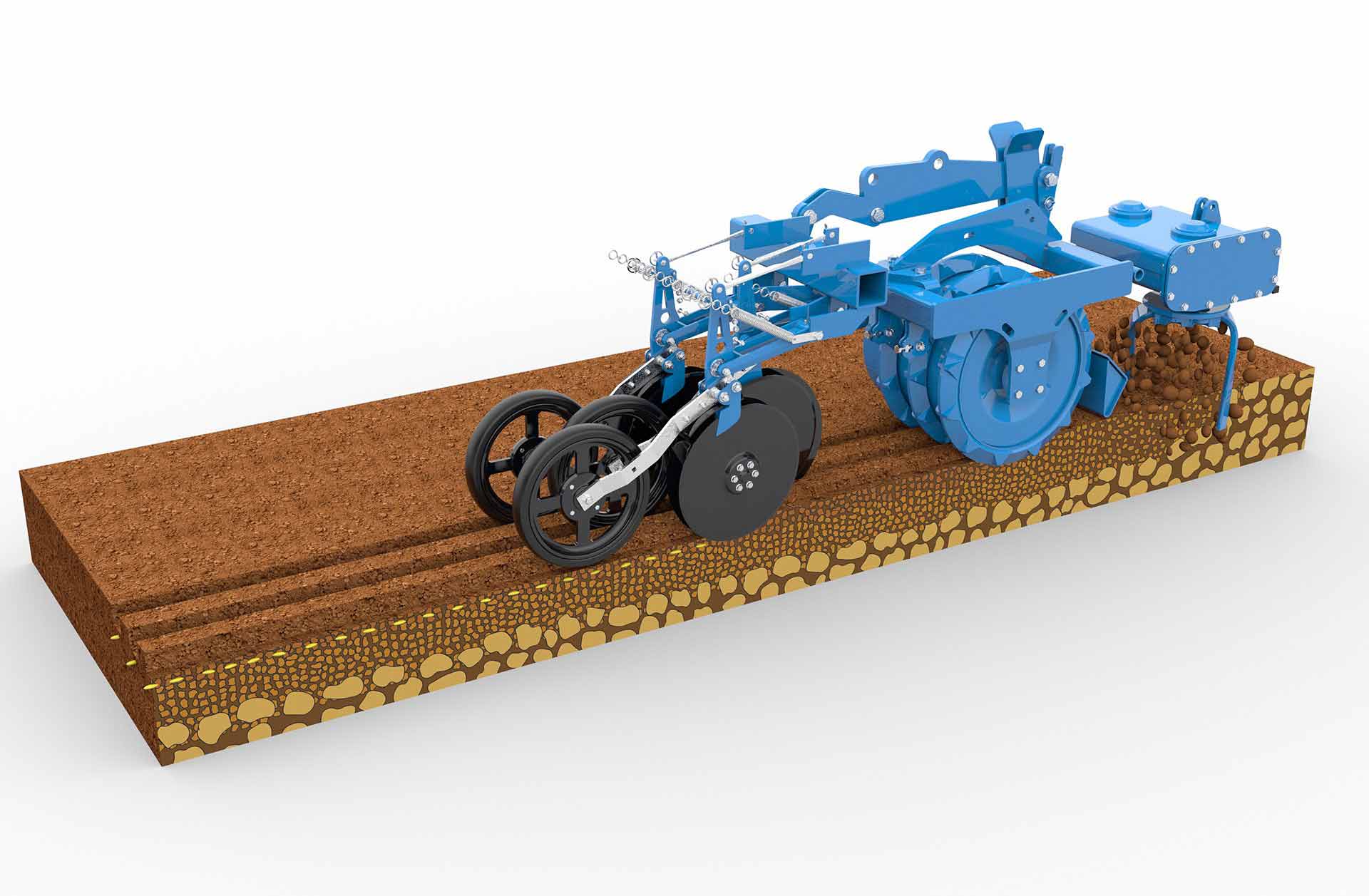
Their special characteristics are:
- Carbide scraper
- High load capacity on medium and heavy soils
- Almost universal applicability
- Low susceptibility to sticking soil